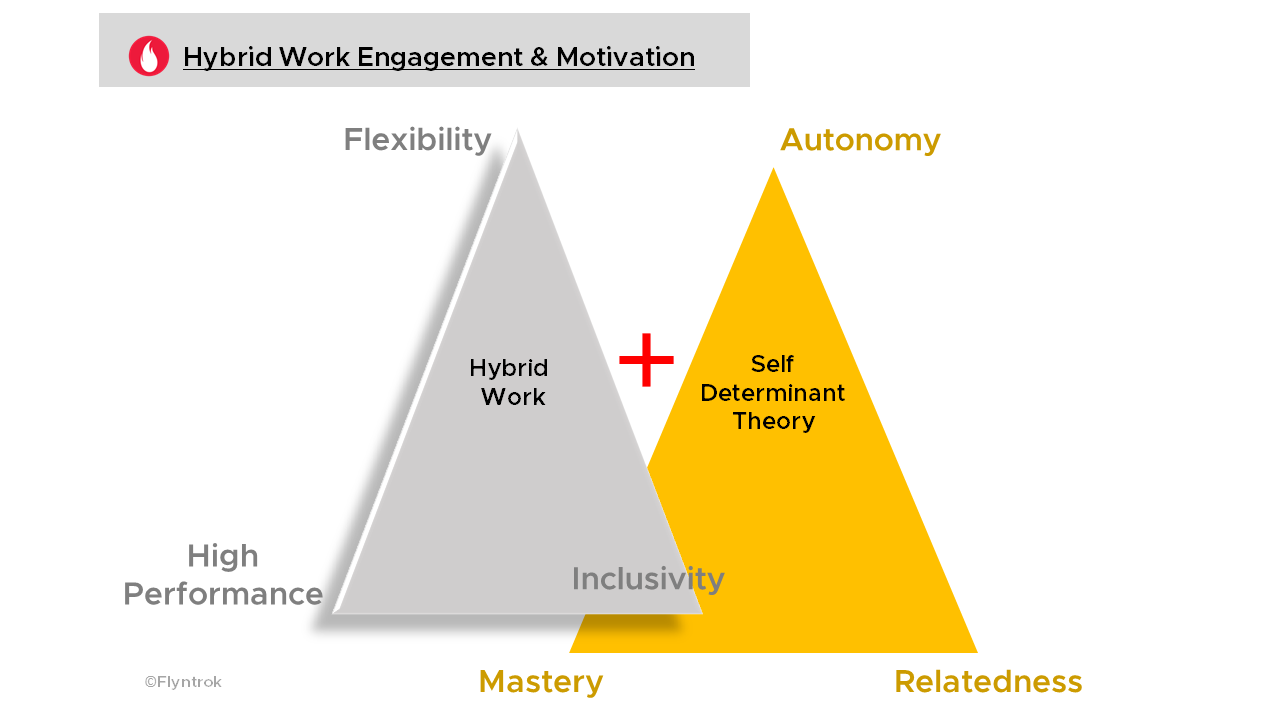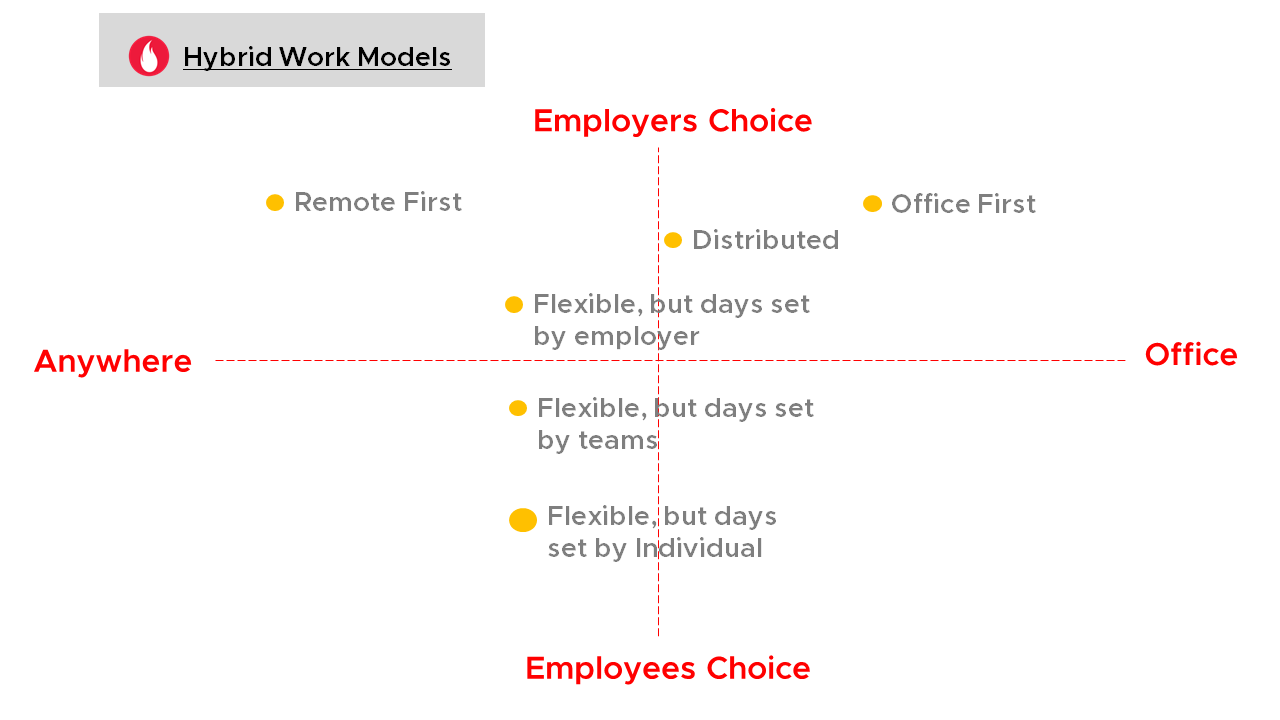
Hybrid work entered mainstream discussions thanks to the pandemic. The year 2020 saw 47%– 71% of the workforce across the globe shift into remote work, almost overnight. Thereafter the waves of the pandemic meant that different groups of employees resumed office at different times. Not surprisingly that is how it has stayed! Even now employees across the globe are back in office on a need to basis – for a few days a week. Hybrid work has evolved as the near future of work for organisations.
In this series we look to define hybrid work and explore hybrid ways of working. We also offer models to understand the types of hybrid work possibilities. This post comes about in part because of the confusion surrounding hybrid work. This is also an attempt to share and shape our own work with organisations in this space.
Definition of Hybrid Work
“Hybrid work is a flexible approach to get work done and enable positive outcomes. The crucial thing is not where or when the work gets done, but that it does”.
Flyntrok
Hybrid work requires us to be intentional in creating a supporting eco-system that enables positive outcomes. To identify these elements, we leant heavily on research. The Self- Determinant Theory by Ryan and Deci is considered one of the leading research papers in creating engagement and positive outcomes in organisations. Taking the SDT as the base of our work, we applied the reality of hybrid on it. What emerged are the key elements that become important in hybrid work, in addition to those that existed when we all worked from one location/office.
That means while the original self-determinant theory elements of Autonomy, Relatedness and Mastery remain important in hybrid as much as in office. Additional elements of Flexibility, Inclusivity and High Performance become important for organisations to create as well, in Hybrid working mode.
Hybrid work will thrive in an ecosystem that provides:
- Autonomy and flexibility
- Relatedness and Inclusivity
- Mastery and high performance.

Types of Hybrid work
There are many possibilities with hybrid working. Organisations and employees would do best to consider their context while designing a hybrid approach. The operative word in the above sentence is design. Hybrid ways of working will need to be designed and co-created by the teams to fit their specific contexts. There isn’t a one size fits all.
The two axes along which hybrid work can be imagined are location and choice. It begets several hybrid work options that teams and organisations can create for themselves, taking into account their unique context and needs. A non-exhaustive visual enclosed below.

The choices, companies and teams make, should ideally be a function of their own contexts and needs. They need to factor in their teams’ deliverables and team member needs for optimal performance. Irrespective of which axis determines the choice, hybrid working is always about ensuring that work gets delivered better, faster, cheaper and by leveraging lesser resources.
That’s it for this edition. Going forward, it is highly unlikely that all of us will be in office at the same time all the time. It is imperative for organisations, leaders and managers to explore this reality and equip themselves and their teams appropriately. Join us as we explore different aspects, nuances and ways of working in #Hybrid.







